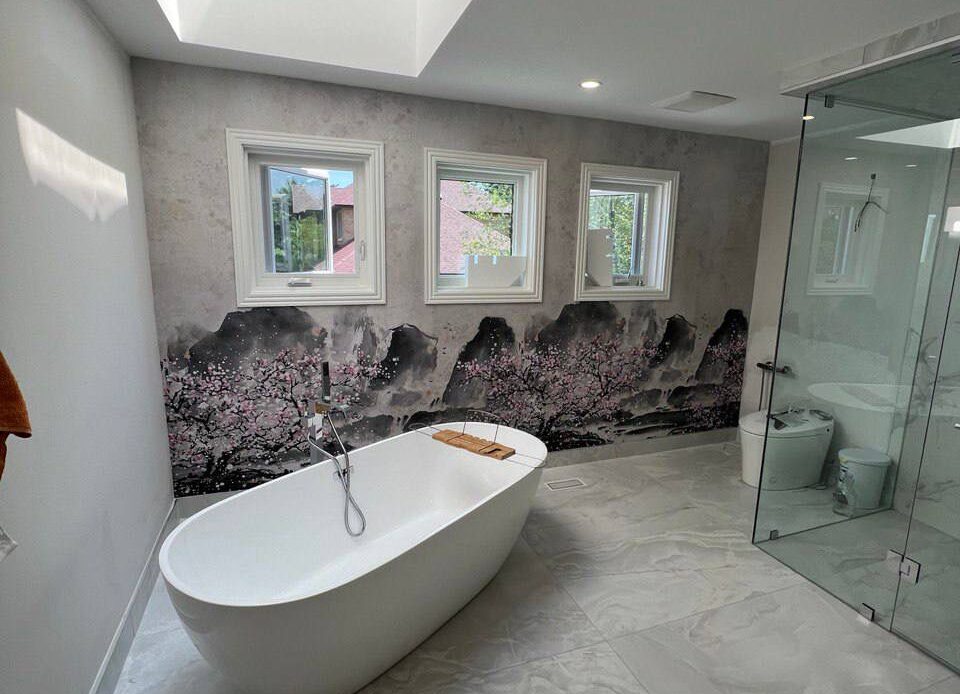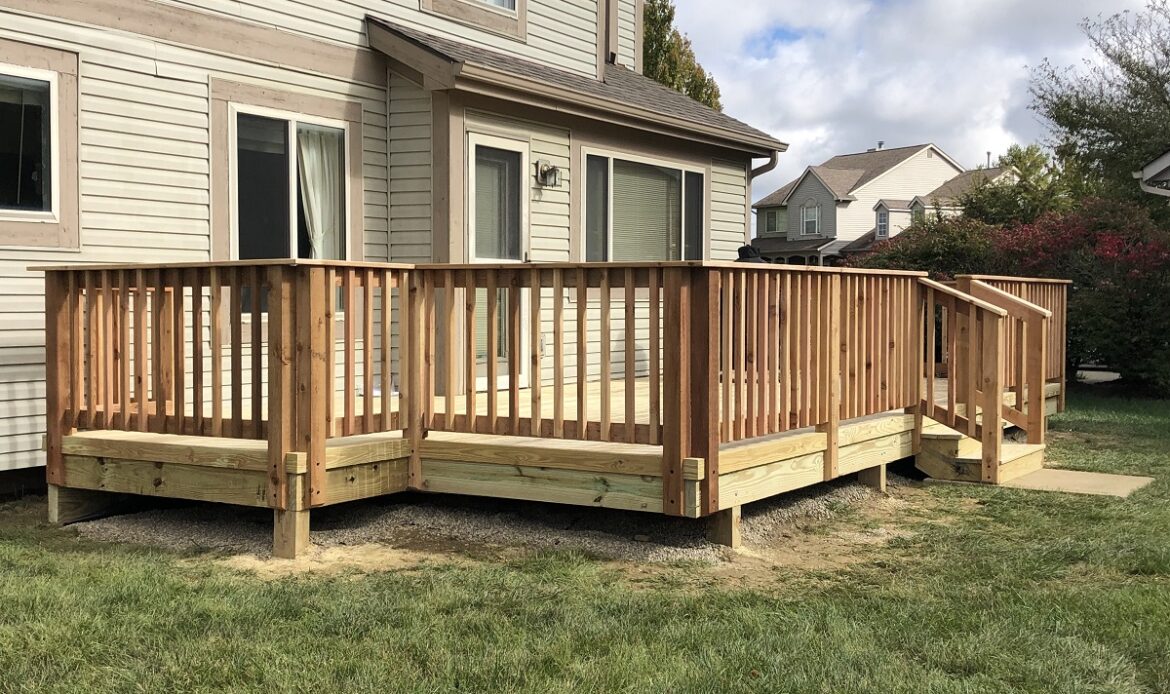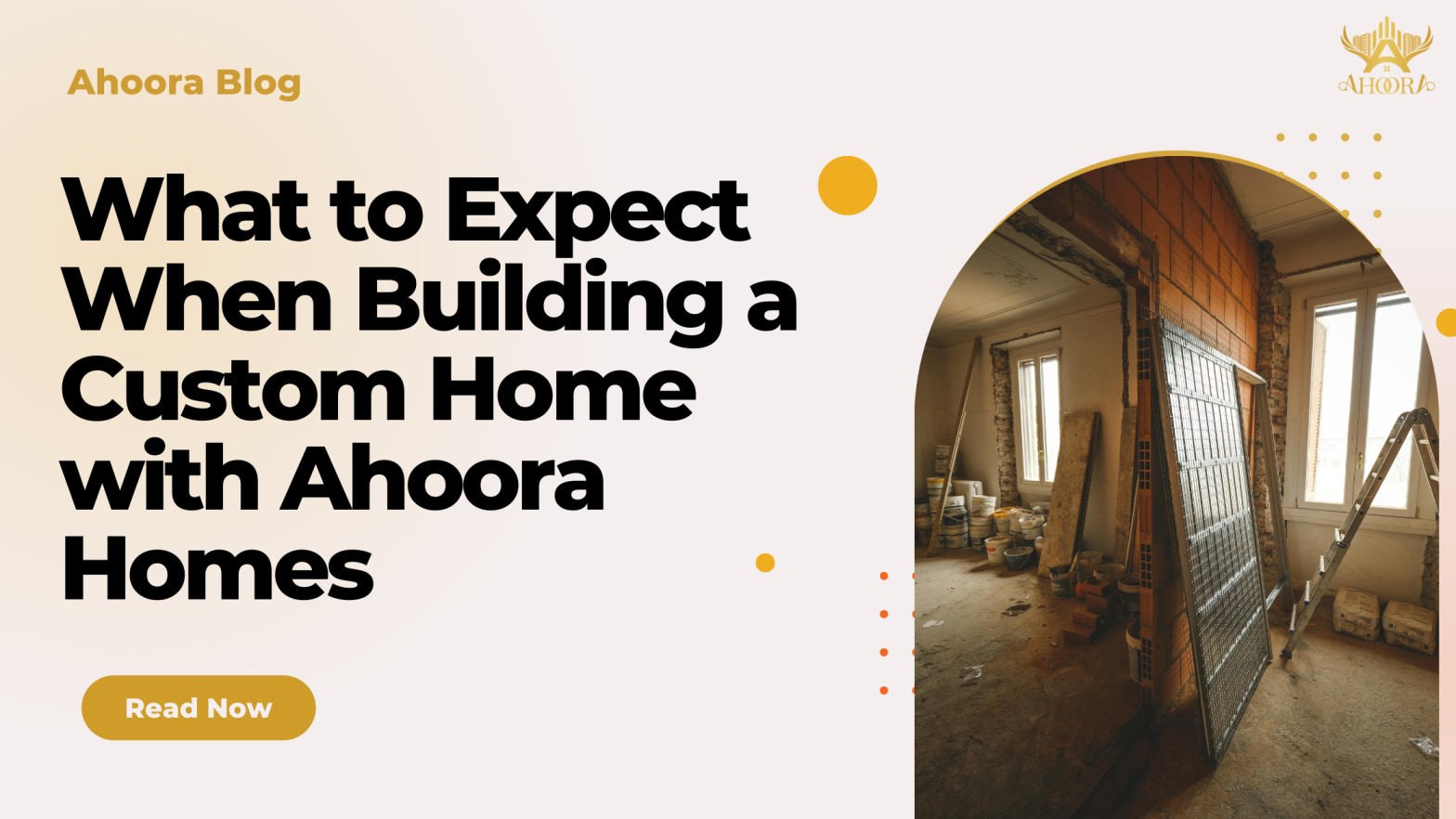Building a custom home is an exciting journey, but it can also feel overwhelming if you don’t know what to expect. From the first design ideas to the moment you move in, every step requires careful planning, the right team, and a clear vision. That’s where working with Ahoora Homes makes all the difference. With years of experience in Toronto and across the GTA, we guide homeowners through each stage of the process to make building a custom home both smooth and enjoyable.
In this blog, we’ll walk you through exactly what to expect when building a custom home with Ahoora Homes. You’ll learn how our process works, the benefits of choosing a trusted builder, and the key things to keep in mind as your dream home comes to life. Whether you’re planning your first custom build or upgrading to a bigger space, this guide will help you understand the journey ahead with confidence.
Table of Contents
Why Choose a Custom Home in the GTA?
When it comes to finding a place to live in the Greater Toronto Area (GTA), homeowners face many choices. From condos to resale houses, the market offers plenty of options—but none of them truly match the level of freedom and personalization that comes with building a custom home in the GTA. Choosing this path means creating a living space that reflects your lifestyle, needs, and long-term goals. Below, we’ll explore the top reasons why more families are choosing custom homes over traditional options.

1. Full Control Over Design
With a custom home, you aren’t limited to the layouts or finishes someone else chose years ago. Instead, you work with expert designers and builders to create a floor plan that perfectly fits your vision. Want an open-concept kitchen, a spacious home office, or a private guest suite? You decide every detail. This flexibility is especially important in the GTA, where families often need homes tailored to multigenerational living or work-from-home setups.
2. Location That Works for You
Buying a resale home often means compromising on location—you might love the house but dislike the neighbourhood, or vice versa. Building a custom home gives you the freedom to choose a lot in the GTA that suits your lifestyle. Whether you want a quiet suburban community, easy access to transit, or proximity to schools and parks, you get to decide where your dream home will stand.
3. Long-Term Investment Value
A custom-built home in Toronto or the GTA isn’t just about personal comfort—it’s also a smart financial investment. By designing a modern, energy-efficient property with quality materials, you increase its long-term value. Homes built with future buyers in mind—such as including sustainable features, storage solutions, or luxury upgrades—tend to stand out in the competitive GTA housing market.
4. Energy Efficiency and Modern Technology
Many older homes in the GTA come with outdated systems that require costly upgrades. A custom home allows you to build smarter from the start. You can integrate eco-friendly materials, high-performance insulation, and the latest smart home technology. Features like energy-efficient windows, solar panels, or advanced HVAC systems not only lower monthly bills but also reduce your environmental footprint.
5. Lifestyle-Centered Features
Every family’s lifestyle is different. Some need large entertainment spaces, while others prefer cozy and private layouts. A custom home ensures your living space matches your lifestyle. For example, if you love cooking, you can create a chef-inspired kitchen. If relaxation is a priority, you might include a spa-style bathroom or outdoor lounge. These personalized touches are what make custom homes in the GTA so appealing.
6. Durability and Quality
Resale homes often come with hidden issues such as outdated wiring, plumbing problems, or foundation repairs. With a custom build, you can rest assured knowing that every part of your home is constructed with high-quality materials and modern building standards. Builders like Ahoora Homes focus on durability and craftsmanship, ensuring your home not only looks beautiful but also lasts for generations.
7. No Need for Future Renovations
Many homeowners in the GTA buy older properties with the plan to renovate—but renovations can be stressful, time-consuming, and expensive. A custom home eliminates this issue by giving you exactly what you want from day one. Instead of adjusting someone else’s design, you move into a space already tailored to your needs, saving time and money in the long run.
8. Emotional Value and Pride of Ownership
There’s something deeply rewarding about living in a home you helped design. Every corner, finish, and feature reflects your personality and values. This sense of pride in ownership can’t be matched by purchasing a pre-built home. For families planning to stay in the GTA for years to come, a custom home becomes more than just a house—it’s a legacy.
Pre-Construction Planning & Budgeting
Building a custom home is exciting, but success begins long before construction starts. Careful pre-construction planning and realistic budgeting set the foundation for a smooth and stress-free process. At Ahoora Homes, we guide GTA homeowners through each step, ensuring no detail is overlooked.
Here’s a step-by-step guide to understanding the planning and budgeting phase of your custom home journey:
Step 1: Define Your Vision and Lifestyle Needs
Before diving into numbers, clarify what you want in your custom home.
- How many bedrooms and bathrooms do you need?
- Do you prefer an open-concept design or more private spaces?
- Are energy-efficient or smart-home features important to you?
Defining your vision early allows Ahoora Homes to align the design with your lifestyle and ensures budgeting is accurate from the start.
Step 2: Establish a Realistic Budget
Budgeting is more than just estimating construction costs—it’s about looking at the full picture. Work with your builder to:
- Consider land acquisition costs (if not already purchased).
- Factor in permits, inspections, and utility connections.
- Allocate funds for finishes, appliances, and custom upgrades.
- Keep a 10–15% contingency fund for unexpected expenses.
This step prevents surprises and gives you a clear financial roadmap for your project.
Step 3: Secure Financing Early
Custom homes often require construction loans or staged financing. To avoid delays:
- Consult with your bank or mortgage broker about available options.
- Get pre-approval for the required budget.
- Understand the draw schedule (when funds are released as the project progresses).
Having financing secured before design work begins ensures construction flows smoothly.
Step 4: Choose the Right Location
The GTA has diverse neighbourhoods, each with unique zoning rules, lot sizes, and property values. Factors to consider include:
- Accessibility to schools, transit, and amenities.
- Local bylaws and zoning restrictions.
- Soil conditions or environmental limitations on the lot.
Ahoora Homes works with clients to evaluate land options and confirm suitability for their dream home.
Step 5: Collaborate on Design & Floor Plans
During the planning stage, Ahoora Homes provides expert input on creating functional floor plans that match your lifestyle and budget. This is the stage to:
- Discuss square footage requirements.
- Select layouts that maximize natural light and energy efficiency.
- Prioritize features like basements, garages, or outdoor living areas.
Good planning ensures the final design reflects your needs without inflating the budget.
Step 6: Understand Permit & Approval Processes
In Toronto and the GTA, custom home projects must comply with municipal regulations. Key considerations include:
- Building permits for structural work.
- Zoning approvals for lot coverage and setbacks.
- Environmental or heritage restrictions, if applicable.
Having an experienced renovation and construction company like Ahoora Homes on your side ensures all applications are handled properly, saving time and avoiding costly delays.
Step 7: Plan for Long-Term Value
While budgeting, think beyond construction costs. Ask yourself:
- Will this design increase long-term property value?
- Are sustainable building materials worth the initial investment?
- Do you want future-proof features like EV charging stations or adaptable spaces?
Strategic planning not only creates your dream home but also boosts resale value in the competitive GTA real estate market.
Permits, Zoning & Local Regulations
When planning a custom home in the GTA, one of the most important steps is making sure your project follows all local rules and requirements. Skipping or misunderstanding these steps can lead to costly delays, fines, or even having to redo work. This is why paying attention to permits, zoning, and local regulations should be a priority from the very beginning of your custom home journey.

Below are the key steps every homeowner should understand:
Step 1: Understand Local Zoning Bylaws
Before you finalize your design, check the zoning bylaws for your neighbourhood. Zoning rules set limits on how you can use your land. They cover things like:
- The type of home you can build (single-family, duplex, etc.)
- How tall your house can be
- How much of your land can be covered by the building
- The required distance from property lines (setbacks)
For example, in Toronto and surrounding areas of the GTA, zoning bylaws can vary from one neighbourhood to another. If your plan does not meet zoning rules, you may need to apply for a minor variance or rezoning approval before moving forward.
Step 2: Apply for Building Permits
Once your design follows zoning rules, you need to get a building permit from your local municipality. A building permit confirms that your plans follow the Ontario Building Code, health and safety standards, and structural requirements.
To apply, you will need:
- A detailed set of architectural drawings
- Structural, mechanical, and electrical plans (if required)
- Site plan showing your property and proposed construction
Building permits ensure your custom home in the GTA is safe, durable, and legal. Without them, construction cannot move forward.
Step 3: Review Environmental & Heritage Rules
Some properties in the GTA may have extra requirements. For example:
- Heritage properties: If your land or home is in a heritage district, you may need special approvals before making changes.
- Environmental restrictions: Lots near ravines, wetlands, or conservation areas may require clearance from conservation authorities.
These rules exist to protect the community, natural environment, and cultural history. Always check if your property falls under any of these special categories.
Step 4: Pass Inspections During Construction
After you get a building permit, the process doesn’t stop there. Municipal inspectors will visit your site at different stages of construction, such as foundation, framing, plumbing, and final completion. Passing these inspections confirms that your project continues to meet code and safety standards.
If something does not pass inspection, you must correct it before moving forward. This ensures your new custom home is built to last and safe for your family.
Step 5: Work With Professionals
Dealing with permits and zoning can feel overwhelming, especially if it’s your first time building a home. This is why many homeowners in the GTA work with experienced custom home builders, architects, or project managers. These experts:
- Prepare and submit permit applications
- Ensure your designs meet zoning bylaws
- Communicate with city officials on your behalf
- Save time and reduce stress throughout the process
Working with professionals also reduces the risk of costly mistakes and keeps your project on schedule.
Construction Timeline & Phases
When you begin building a custom home in the GTA, it’s important to understand how the construction timeline works. A clear timeline helps you manage expectations, stay on budget, and keep the process stress-free. While every project is unique, most custom homes follow similar phases that ensure the work is done in the right order and without delays.
Here’s a step-by-step breakdown of the typical construction timeline for custom homes in the GTA:
Step 1: Site Preparation & Foundation Work
The first phase involves preparing your lot for construction. This includes clearing the land, grading the soil, and setting up temporary utilities. Next comes excavation and laying the foundation, which could be a slab, crawl space, or basement depending on your design. This step usually takes 3–6 weeks, depending on soil conditions and weather. A strong foundation ensures your home is safe and built to last.
Step 2: Framing the Structure
Framing brings your custom home to life. In this stage, walls, floors, and the roof structure are built. Framing defines the layout of your rooms and allows you to see the shape of your home for the first time. This step can take 4–8 weeks. It’s a crucial part of the timeline because it sets the stage for plumbing, electrical, and HVAC installation.
Step 3: Installing Systems (Plumbing, Electrical & HVAC)
Once framing is complete, it’s time to install the major systems. Licensed professionals handle plumbing, electrical wiring, heating, and cooling systems. These installations are inspected to ensure they meet Ontario building codes and safety regulations. This phase often overlaps with framing and takes about 4–6 weeks.
Step 4: Roofing, Windows & Exterior Work
The home is “dried in” during this stage, meaning the roof, windows, and exterior doors are installed. This step protects the interior from weather so the next phases can move forward smoothly. Exterior finishes such as brick, siding, or stucco may also begin here. This stage typically lasts 3–5 weeks.
Step 5: Interior Finishes
This is where your home starts looking like the design you envisioned. Drywall, insulation, flooring, cabinetry, and paint are completed during this stage. Interior finishes usually take 8–12 weeks, depending on how detailed and customized your design is. Homeowners often get most excited at this stage because the house feels nearly complete.
Step 6: Fixtures, Appliances & Final Touches
The last stage involves installing light fixtures, plumbing fixtures, countertops, and appliances. Final inspections are conducted to ensure everything meets code and functions correctly. Once completed, your builder will do a walkthrough with you to check for any last-minute adjustments. This phase usually takes 2–4 weeks.
Step 7: Handover & Move-In
After all inspections are cleared and finishing touches are complete, your builder officially hands over the keys. At this point, your custom home in the GTA is ready for you to move in and enjoy.
Cost Insights for Toronto Custom Homes
Building a custom home in Toronto is exciting, but one of the biggest concerns for most homeowners is cost. Understanding the different expenses involved will help you plan wisely, stay within budget, and avoid unpleasant surprises. Below, we break down the main cost factors step by step so you can make informed decisions about your dream home.
Step 1: Understand the Average Cost per Square Foot
- In Toronto, the average cost of building a custom home ranges from $250 to $450 per square foot depending on design, finishes, and materials.
- For a 2,500 sq. ft. home, this can mean anywhere from $625,000 to over $1 million.
- Premium finishes, unique architecture, and luxury add-ons can push the cost higher.
Step 2: Land Purchase & Preparation
- Land prices in the GTA vary widely. Premium neighborhoods like North York or Oakville can be much more expensive than suburban areas.
- Beyond the land price, you also need to consider site preparation costs, such as:
- Demolishing an old house (if required)
- Clearing trees or rocks
- Soil testing and grading
- Demolishing an old house (if required)
These costs can range between $20,000 to $80,000 depending on the property’s condition.
Step 3: Permits, Zoning & Legal Fees
- Toronto has strict building codes and regulations. You’ll need permits for demolition, construction, electrical, plumbing, and more.
- Permit fees usually range from $5,000 to $20,000, depending on the size and complexity of your project.
- Professional fees for architects, engineers, and surveyors should also be factored in—this could add another 10–15% of your construction budget.
Step 4: Construction & Materials
- The largest portion of your budget goes to actual construction work. This includes:
- Foundation and framing
- Roofing, windows, and insulation
- Plumbing, electrical, and HVAC systems
- Foundation and framing
- Material choices make a huge difference. For example, hardwood floors cost more than laminate, and custom cabinetry is pricier than stock cabinets.
- Expect this phase to consume 40–50% of your total budget.
Step 5: Interior Finishes & Custom Features
- This is where your custom home truly reflects your style. Finishes may include:
- Flooring, countertops, and tiles
- Built-in storage solutions
- Smart home systems and energy-efficient appliances
- Flooring, countertops, and tiles
- Costs here can range from $100,000 to $300,000+, depending on your preferences.
Step 6: Landscaping & Outdoor Living Spaces
- Many homeowners forget to budget for landscaping, driveways, fences, or outdoor patios.
- Landscaping in Toronto can range between $10,000 to $100,000, depending on the size of your lot and design complexity.
- Outdoor kitchens, pools, or decks will add significantly to this cost.
Step 7: Unexpected Costs & Contingency Budget
- Always plan for the unexpected. Delays, material shortages, or design changes can increase expenses.
- A good rule is to keep 10–15% of your budget aside for contingencies.
Step 8: Long-Term Value of Your Investment
- While custom homes in Toronto can be expensive, they also bring strong return on investment.
- A well-designed custom property not only meets your lifestyle needs but can also increase in value faster than standard homes.
Common Challenges and How Ahoora Homes Helps
Building a custom home in the GTA is an exciting journey, but it also comes with challenges that many homeowners don’t anticipate. From budget concerns to construction delays, these issues can cause unnecessary stress if not managed properly. At Ahoora Homes, we understand these roadblocks and offer proven solutions to make the process smooth and stress-free.
Here are the most common challenges homeowners face and how Ahoora Homes helps at each step:
1. Budget Overruns
Challenge: Many homeowners underestimate costs, leading to unexpected expenses during construction.
How Ahoora Homes Helps: We provide a detailed cost breakdown before the project begins, highlighting potential hidden costs such as permits, materials, and labour. Our transparent approach ensures you stay within budget and have full control of your spending.
2. Delays in Construction
Challenge: Weather conditions, supply chain issues, or mismanaged timelines often cause project delays.
How Ahoora Homes Helps: Our team uses structured scheduling tools and a clear construction timeline to keep everything on track. We also communicate regularly, so you’re always updated on progress and potential changes.
3. Permit and Zoning Issues
Challenge: Many homeowners don’t realize how complex permits and zoning regulations can be in Toronto and across the GTA. Any mistake can result in fines or project stoppages.
How Ahoora Homes Helps: We handle all the paperwork and work directly with local authorities to secure permits. Our expertise in GTA zoning bylaws ensures your custom home meets all requirements.
4. Choosing the Right Materials
Challenge: Selecting materials that balance durability, design, and budget can feel overwhelming.
How Ahoora Homes Helps: We guide you through material options, offering recommendations based on your lifestyle and budget. Whether you want eco-friendly products, luxury finishes, or cost-effective solutions, we help you make confident choices.
5. Design & Functionality Conflicts
Challenge: Homeowners often struggle to match their dream design with practical layouts.
How Ahoora Homes Helps: Our design experts collaborate with you to create layouts that look beautiful and function well. We use 3D models and walkthroughs so you can visualize your home before construction starts.
6. Unexpected Site Conditions
Challenge: Issues such as soil quality, drainage problems, or existing property structures can cause delays and added costs.
How Ahoora Homes Helps: Before starting, we conduct thorough site inspections to identify potential challenges. This proactive approach reduces surprises and allows us to plan ahead for efficient solutions.
7. Communication Gaps
Challenge: Poor communication between homeowners and builders often leads to misunderstandings and frustration.
How Ahoora Homes Helps: At Ahoora Homes, we prioritize clear and regular communication. You’ll always have a dedicated project manager to answer questions, provide updates, and ensure you feel supported throughout the journey.
Why Ahoora Homes Is Your Trusted Partner
By addressing these challenges head-on, Ahoora Homes makes the custom home process less stressful and more rewarding. Our transparent budgeting, expert knowledge of Toronto regulations, careful planning, and commitment to client satisfaction set us apart. With us, you’re not just building a house—you’re creating a home that’s designed for your lifestyle and future.
Conclusion
Building a custom home in the GTA is an exciting journey that allows you to design a space that reflects your lifestyle, family needs, and long-term goals. While the process involves careful planning, budgeting, and understanding local regulations, the reward is a home tailored uniquely to you. Ahoora Homes specializes in creating high-quality custom homes in Toronto and the GTA, guiding clients through every step with expertise and transparency. By choosing the right builder, you can overcome challenges, stay on budget, and enjoy a seamless construction experience. With the right support, your dream home in the Greater Toronto Area can become a lasting reality.
FAQs
-
How long does it take to build a custom home in the GTA?
On average, building a custom home in Toronto or the GTA takes 12 to 18 months, depending on the size, design complexity, permits, and weather conditions. Ahoora Homes provides clear timelines to keep projects on track.
-
What is the average cost of building a custom home in Toronto?
The cost of a custom home in Toronto usually ranges from $250 to $450 per square foot. Factors like design, finishes, and lot conditions affect pricing. Getting a detailed budget plan upfront helps avoid unexpected expenses.
-
Do I need permits to build a custom home in the GTA?
Yes, you need permits for zoning, building, electrical, and plumbing. These approvals ensure your home meets local safety and design standards. An experienced builder like Ahoora Homes handles the entire permit process for you.
-
How do I choose the right builder for my custom home in Toronto?
Look for a builder with proven experience, transparent pricing, and strong client reviews. Ahoora Homes is trusted in the GTA for delivering quality custom homes with personalized service.
-
What are the biggest challenges in building a custom home?
Common challenges include permit delays, budget overruns, and managing multiple contractors. Working with a reliable builder who has strong project management skills can help you avoid these issues.

